|
Many years ago, when I was a sixteen-year-old
kid, I bought my first handgun. It was a brand new Ruger
Security-Six .357 magnum with a four inch barrel. I learned to
shoot a handgun with that Ruger. I also learned to handload my
own ammunition using that sixgun as a platform for my
experimental ventures into the dark world of handloading. Back
then, a fellow was looked upon with suspicion by most shooters
if he rolled his own ammo, but working after school, if I
didnít handload, I could certainly not afford to shoot very
much .357 Magnum ammo. My Security-Six was built in 1976, and
bore the roll mark ďMade In The 200th Year Of
American LibertyĒ, as were all Ruger firearms that were
produced that year. I paid the gun store $121, and they threw in
one box of ammo, and another six bucks bought me a leather
holster for the sixgun. I suppose that a manís first anything
has more meaning to him, and that Security-Six sure meant a lot
to me. It started me reading all that I could about firearms,
and handguns in particular. Back then, there were several good
writers who actually enjoyed shooting. My favorites were Bob
Milek, Skeeter Skelton, Bill Jordan, Elmer Keith, and Hal
Swiggett. There were others that I read, but these gentlemen
penned the words that piqued my interest in handguns, which to
this day has still not faded. I have been accused before, on
several occasions, of liking every gun that I come across. While
that is a bit of an exaggeration, I do like most guns. If it
does that which it was designed to do, and functions well with
reasonable accuracy, then I pretty much like it. Still, like
most folks, I have my favorites. However, when reviewing a
handgun for Gunblast.com, I try to keep my personal prejudices
from entering into the review. I try to list the facts, and let
the reader decide. However, since I started out on a Ruger, I do
tend to like them. They are good, solid, firearms, built for
shooters.
When reading of those handguns back in the 1970s
and 80s, guns like the Blackhawks,
Single-Sixes, Redhawks, and others, I always wanted to visit the
factory where they were built. I read of the investment casting
processes using the lost-wax method of casting, and that stuff
really facilitated me. Finally, last week, I made the trip to
New Hampshire for a visit with several of the marketing folks
and engineers at Sturm, Ruger & Company. There were
four other writers present, some I had met before and some that
I had not, but we were all treated very well, and shown some of
the new manufacturing techniques that Ruger has put into play at
the New Hampshire factory.
Like most American manufacturing companies,
Ruger operated in various sections, with folks who drilled the
same hole in the same part, day after day, for his whole working
life. Same thing with the man who machined a groove for a rear
sight. He would have parts coming in, do his thing, and send it
on. With this method, there are boxes of parts all over the
factory, but the one part needed to assemble a gun might be two
months away from production. Ruger has now transformed their
operations into manufacturing cells, where, in one given section
of the factory, all the parts for a certain firearm are built,
and then assembled just a few feet away. With this method and
modern CNC machinery, Ruger can go from design to production
much faster. I am sure that many of you have noticed that just
about every major gun wholesaler has their own version of, for
example, the 10/22 rifle. Using the cell manufacturing system,
Ruger is able to run small batch special orders quickly and
efficiently. Instead of taking a year or more to get a new
product or variation in production, it now takes a couple of
weeks, once the design is perfected. No longer are there boxes
of parts that are no longer needed, but there are boxes of just
the right number and style of parts to build the guns that are
heading for shipping. This new system also allows for mistakes
to show up quickly, instead of several months down the road,
after thousands of the parts have been machined that are good
for nothing but scrap. The new system allows a mistake to show
up within a day or so, and the corrective action can be taken
without holding up production for several months.
Anyway, I was delighted to visit the factory, as
I always am when I get to see quality guns being built. I had
the opportunity to see how the various parts move from station
to station within the cell, and shown how the workers have a
great deal of input into the design of the cell itself. I saw a
couple of racks of the new 50th Anniversary Super
Blackhawk frames and barrels ready for assembly, and they
will start shipping to distributors next month. I was happy to
see that the Anniversary Supers are getting the high-polish
finish like the Supers of years ago. Look for a review of the
Anniversary Super Blackhawk on Gunblast soon. I saw other very
interesting things like the assembly stations for the Number
1 and Hawkeye
rifles, as well as the 10/22 cells where Ruger can turn out 1000
rifles per day! Not long ago, Ruger changed from an aluminum
trigger housing on the 10/22 to an injected polymer unit. I
didnít care for the change myself, but it was hard to see much
difference, so I didnít scream about it. After seeing both the
aluminum and polymer trigger housings side-by-side, it is clear
to see that the new polymer housing is a more consistent
product, which does not suffer the problems of tolerance
stacking that the older machined part did. With the polymer
unit, Ruger engineers told me that they can control the trigger
pull much better than before, and that all 10/22s now leave the
factory with a much better trigger pull than in years past.
I had thought, as had many others, that the .480
Super Redhawk was a thing of the past, but I saw a
couple of racks of them in assembly. Later, while we were at the
indoor range, a technician wheeled in a cart of about twenty or
so of the six-shot .480 Super Redhawks for function and accuracy
testing, and I got to help with that a bit as well.
The trip to New Hampshire was a good one,
despite the ice storm, no power or water at the hotel for
several hours, and the cold temperatures. I got to see some
things that are very interesting to me; the way a firearm comes
together in a modern factory. The food was great, and the
hospitality of the Ruger folks was outstanding. Look for some
new products and variations for the coming year from Ruger, like
the long-awaited Flattop Blackhawk .44 Special, the Anniversary
Super, and the return of the six-shot .480 Super Redhawk,
at least for a while. There are a couple of new chamberings for
the Number 1 rifle, a .480 Ruger/.475 Linebaugh, and a
.460 S&W Magnum. Ruger also has a pair of very interesting
firearms in the works which we shall see in 2009. For now, I am
sworn to secrecy, but do not miss our daily SHOT Show updates
starting on January 14, 2009.
Check out the full line of Ruger products
here.
Jeff
Quinn
|
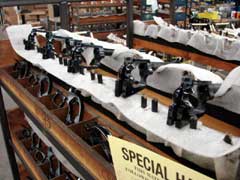
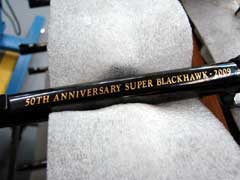

50th Anniversary Super Blackhawks in assembly.
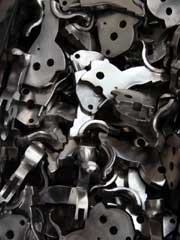
Bisley hammers.
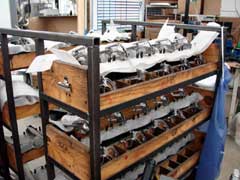

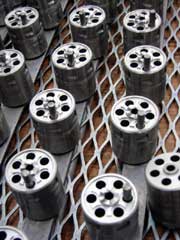
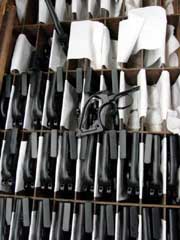
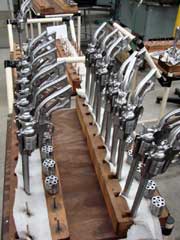
|
  
Got something to say about this article? Want to agree (or
disagree) with it? Click the following link to go to the GUNBlast Feedback Page.
|
|
Click pictures for a larger version.
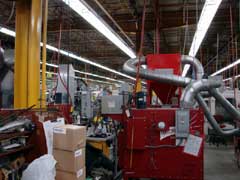
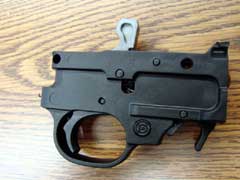
New polymer 10/22 trigger housing.
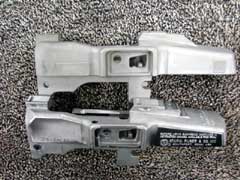
Mini-14 receiver as-cast (top) and after finish
machining (bottom).

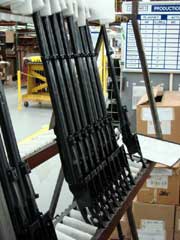
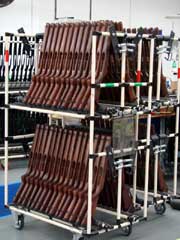
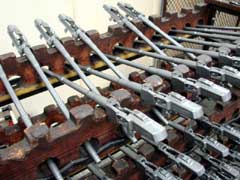
Mini-14 barreled receivers.
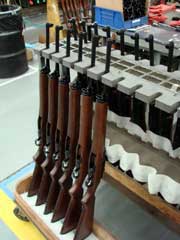
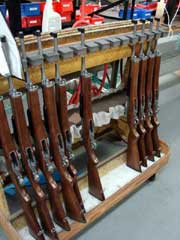
Completed rifles ready for testing.
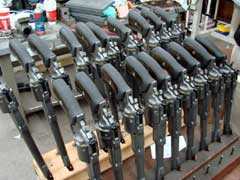
A rack of .480 Super Redhawks ready for test-firing.
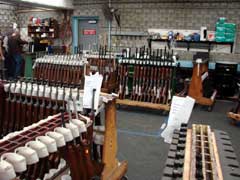
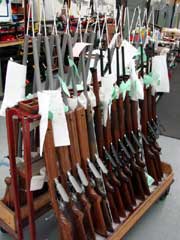
Guns waiting for test-firing.
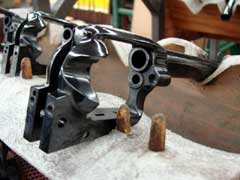
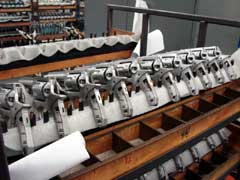

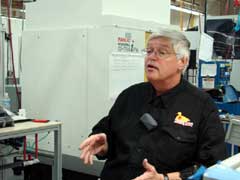
Michael Bane, doing what he does best.
|
![]()